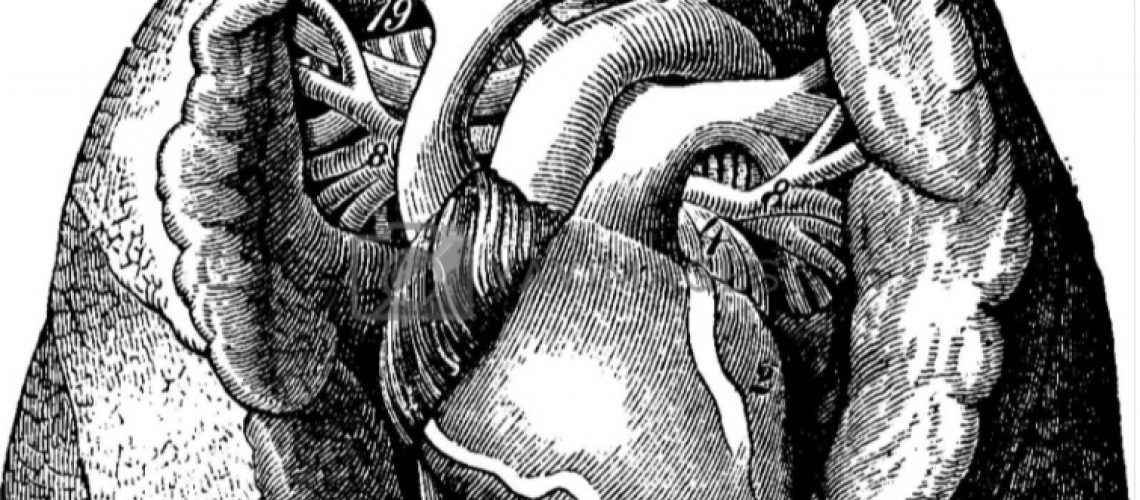The vast majority of people breathe incorrectly. The main problems with breathing are:
- we breathe too fast
- we breathe too high in the chest.
I am convinced that this ‘faulty breathing’ is a major reason for the current epidemic of stress and bad health! One can argue about the chicken-and-egg and claiming that breathing is a secondary factor. I though believe (based on science and our data) that breathing is often the primary cause for chronic ‘unhealthy’ levels of stress and its diseases.
Speed of breathing
Most sites and books say that we take about 20000 breaths per 24 hours. That is far too much. I don’t doubt that fact but it means that we spend on average only 2,9 seconds for both inhalation and exhalation. Evolutionary science and common sense is saying that it is unnaturally quick and we have increased breathing speed. This increase in speed has occurred mainly during past 200 years and it seems to be continuing to speed up. We are in an evolutionary negative spiral – our bad breathing is causing ‘devolution’ of the human species.
So why is breathing ‘too fast’ a bad thing?
Mainly, because it is ‘unnatural’ for us. Our bodies most important ‘need’ is air. We must have oxygen. Human evolution during millions of years is built around this ‘foundation’. The body has optimized its activities to get the most ‘out of air’ without wasting energy. It had to adopt specific ‘policies’ on how oxygen is best used. Since we crawled out from the seas, this adaptation has been the foundation in developing our autonomic nervous system with its ‘fight and flight’ (sympathetic-) and ‘rest and digest’ (parasympathetic = Vagus Nerve) nervous systems. Our ‘brains’ are secondary to this functionality and they came late in our development. The brain is often the one who is damaging this delicate and great ‘homeostasis’ system.
When we are in ‘fight and flight’, the oxygen is directed to muscles and alertness. When the Vagus nerve is activated and we relax, we direct more oxygen to the gut, brain and immune system. For this alternation, our bodies developed a well working data system where the breathing speed is one important signal. There is a reason why breathing can be consciously altered. We can cause fight and flight by starting to breath quickly and we can cause ‘rest and digest’ by breathing slowly. Without it the person would have died quickly. This was an essential feature for those of our ancestors that survived. It is a bit like understanding that only those cars that come with breaks are still in the market. The Vagus nerve is the break.
And here comes the problem – we have speeded up our breathing and it seems to have happened extremely quickly – during past 200 years. When we breath quickly, the break = the Vagus nerve is disengaged. We should ‘naturally’ breath’ deeper and hence slower when we are in ‘rest and digest’ – and to engage our relax mode. We know that we should have a least a 4 seconds long inhalation for the Vagus nerve to really fully ‘understand’ that it can be fully activated. My work and general science agree that our current ‘human evolution configuration’ activates the Vagus fully only when we reach 10 seconds breathing cycles. At quicker breathing pace it works only at limited capacity. This is why the breathing protocol for the VAGUS ® ECG is 5 seconds inhale and 5 seconds’ exhale. When users do it, we can see if the vagus nerve is reacting as it should. If not – then we need to understand why.
So why is breathing ‘too high’ not good?
Our bodies never ‘waste’ energy. Our main breathing muscle is the diaphragm. It is situated between the lungs and the gut. With each breath, the diaphragm at the same time does a lot of other useful things – like for instance helping to move food around in the gut. It is also rotating the heart so that blood flows better around in the body. If one is only breathing ‘high and light’ then it only partially uses the diaphragm. Therefore, then all these other functions are not working as they should. Over time, for many, this then develops into other types of problems such as blood pressure issues or digestions problems.
What should I do about my breathing?
Firstly, learn to be aware of how quickly you breathe. Measure it. Observe yourself breathing. Try to ‘catch it’ from time to time. Be mindful of it. If you notice that it is quick and shallow then you need to do something to improve it. Start for instance by practicing controlled breathing during a given period each day. Practice slow paced breathing with stronger diaphgragmatic muscle work (breath low). Choose when it is most suitable for you. It doesn’t matter when you do as long as you do it consistently. You are exercising to become ‘normal’ again.
Personally, as I am practicing Vipassana mediation & yoga so I do something called Pranayama breathing. Pranayama – also called yogic breathing – is a well-known ancient practice of controlled breathing, often performed together with meditation or yoga. The act of controlling one’s breath for the purpose of restoring or enhancing one’s health has been practiced for thousands of years amongst Eastern cultures. Various forms of pranayama exist, such as nostril breathing (double, single or alternate), abdominal breathing, forceful breathing and vocalised (chanting) breathing, which are performed at varying rates and depths. Yoga, and pranayama, introduced to the west in the late 1800s and its popularity rose in the mid-1900s. There is a wide variety of breathing techniques so choose which suits you best. Personally, I recommend slow breathing techniques and for instance not the quick breathing techniques like Wim Hof method since quick breathing I consider detrimental to Telomere length in DNA.
‘Do-it-yourself’, NHS basic stress relieving breathing guide:
This calming breathing technique for stress, anxiety and panic takes just a few minutes and can be done anywhere. You will get the most benefit if you do it regularly, as part of your daily routine. You can do it standing up, sitting in a chair that supports your back, or lying on a bed or yoga mat on the floor. Make yourself as comfortable as you can. If you can, loosen any clothes that restrict your breathing. If you’re lying down, place your arms a little bit away from your sides, with the palms up. Let your legs be straight, or bend your knees so your feet are flat on the floor. If you’re sitting, place your arms on the chair arms. If you’re sitting or standing, place both feet flat on the ground. Whatever position you’re in, place your feet roughly hip-width apart.
- Let your breath flow as deep down into your belly as is comfortable, without forcing it.
- Try breathing in through your nose and out through your mouth.
- Breathe in gently and regularly. Some people find it helpful to count steadily from 1 to 5. You may not be able to reach 5 at first.
- Then, without pausing or holding your breath, let it flow out gently, counting from 1 to 5 again, if you find this helpful.
- Keep doing this for 3 to 5 minutes.
Then if you need help, you can easily find a lot of methods, ‘self-help books’ or practices that all more or less help you.
Why is the vagus nerve important for breathing and heart?
The vagus nerve is synchronizing the heart beats to breathing in order to optimise oxygen delivery to body tissues. This function is more active when the body is relaxed. When the body is stressed from mental issues or disease, this heart/breathing synchronization is altered. This alternation is described by the Vagus® ECG test as a RSAsync index and used in the Vagal Homeostasis evaluations. When the vagus nerve is active, it optimises the blood oxygenation by periodically changing the level of oxygen absorption and transfer to the blood in the lungs. This it does by ‘pulsing’ the lungs oxygen absorption parts in synchrony with its influence on increasing and decreasing the heart rate. This is a very important functionality of the vagus nerve because it helps to optimize cardiac/respiratory energy consumption and homeostasis.
How do I measure my breathing and Vagus nerve?
The vagus nerve and breathing are best measured with the VAGUS® ECG test (Apple Watch 4, 5 or 6 or Vagus ECG smartwatch). The VAGUS® ECG test measures several types of vagal tones and it provides unique in-depth analytics of depth and level of diaphragmatic breathing.
Breathe well 😊
Gustaf
- Recommended book: Breath by James Nestor
- Examples of breathing/puls changes see: https://vagus.co/findings-from-3000-vagus-ecg-tests/
- 10 ways to measure your vagus nerve: https://vagus.co/10-ways-to-measure-your-health-with-the-vagus-ecg-test/
- Latest science on the Vagus nerve: https://vagus.co/latest-science-on-the-vagus-nerve/
- 10 ways to activate the Vagus nerve: https://vagus.co/10-ways-to-activate-the-vagus-nerve/
© Gustaf Kranck


This Post Has 2 Comments
Pingback: Pain and the Vagus Nerve - VAGUS ECG ® for Apple Watch: at-home health monitoring
Pingback: Gut and the Vagus Nerve - VAGUS ECG ® for Apple Watch: at-home health monitoring